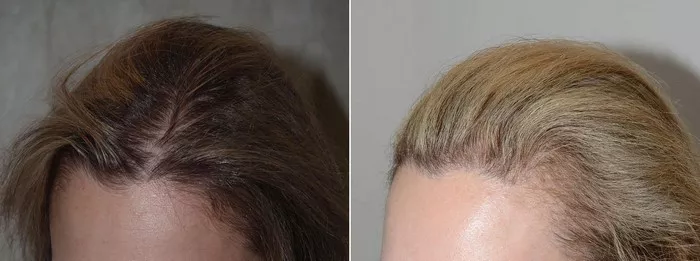Undergoing a hair transplant is a significant decision for individuals seeking to address hair loss and restore their confidence. While the procedure itself is a crucial step, it’s essential to be aware of what happens afterward, including a phase known as post-transplant shedding. In this article, we will explore the intricacies of post-transplant shedding, its duration, and what individuals can expect during this period of their hair restoration journey.
The Hair Transplant Process: A Brief Overview
Before delving into post-transplant shedding, it’s crucial to understand the hair transplant process itself. Hair transplantation involves harvesting hair follicles from a donor area, typically the back or sides of the head, and transplanting them to areas with thinning or no hair. The transplanted hair follicles are carefully placed to mimic the natural growth pattern, providing a long-lasting and natural-looking result.
Post-Transplant Shedding: What is it?
Post-transplant shedding, also known as shock loss, is a normal and temporary phase that occurs after a hair transplant procedure. It is a phenomenon where both the transplanted and existing hair in the recipient area shed or fall out. This shedding is a natural response to the trauma experienced by the hair follicles during the transplantation process. While it may cause concern for individuals, it’s crucial to understand that this shedding is part of the regrowth process.
Why Does Post-Transplant Shedding Occur?
The trauma caused by the transplantation process can induce a temporary resting phase, known as telogen, in the affected hair follicles. During this phase, the hair follicles are not actively growing, leading to the shedding of the existing hair. This shedding is a natural and expected response, and it does not indicate a failure of the transplant.
Additionally, the transplanted hair follicles enter a dormant phase before they start actively growing new hair. This period of dormancy is another reason for the temporary shedding after a hair transplant.
How Long Does Post-Transplant Shedding Last?
The duration of post-transplant shedding can vary from person to person. On average, individuals may experience shedding in the weeks following the transplant, typically starting around the second or third week. The shedding phase may continue for a few weeks, and in some cases, it can last up to a couple of months.
It’s important to note that the shedding is a temporary and transitional phase, and it sets the stage for the regrowth of new, healthier hair. After the shedding phase concludes, the transplanted hair follicles gradually begin to produce new hair, leading to the desired outcome of increased hair density in the treated areas.
Managing Expectations During the Shedding Phase:
Understanding that shedding is a normal part of the post-transplant process is crucial for managing expectations. It’s common for individuals to feel anxious or concerned when they notice increased shedding, but it’s essential to remember that this is a temporary phase.
Here are some key points to keep in mind:
1. Patience is Key: Hair regrowth is a gradual process, and it may take several months before you see significant results. Be patient and allow the hair follicles to go through their natural growth cycles.
2. Follow Post-Transplant Care Instructions: Your transplant surgeon will provide specific post-transplant care instructions. Adhering to these instructions, including avoiding strenuous activities and following a proper hair care routine, can contribute to a successful outcome.
3. Communicate with Your Surgeon: If you have concerns or questions during the shedding phase, don’t hesitate to communicate with your transplant surgeon. They can provide guidance and reassurance based on your individual situation.
The Transition to New Growth:
As the shedding phase concludes, individuals can look forward to the exciting transition to new hair growth. The transplanted hair follicles begin to produce new, permanent hair that will gradually increase in length and thickness over time. The regrowth process is typically noticeable within a few months, with more visible results becoming apparent as the hair continues to grow.
It’s essential to maintain a positive mindset during this transition and to continue following any post-transplant care recommendations provided by your surgeon. Consistency in care and patience are key factors in achieving the best possible outcome.
See Also: The Duration of Pain After a Hair Transplant: A Quick Guide
Conclusion: A Temporary Hurdle on the Path to Renewed Confidence
In conclusion, post-transplant shedding is a normal and temporary phase that individuals may experience after undergoing a hair transplant procedure. While the shedding phase can be concerning, understanding its role in the regrowth process is crucial for managing expectations.
The duration of post-transplant shedding varies among individuals, and patience is key during this period. As the shedding phase concludes, the transition to new hair growth begins, leading to the desired outcome of increased hair density and renewed confidence. By staying informed, following post-transplant care instructions, and maintaining a positive outlook, individuals can navigate the shedding phase with confidence and look forward to the transformative results of their hair restoration journey.


